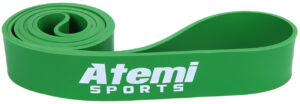Resistance Bands for Pull Ups | How to Use Pull Up Assist Bands
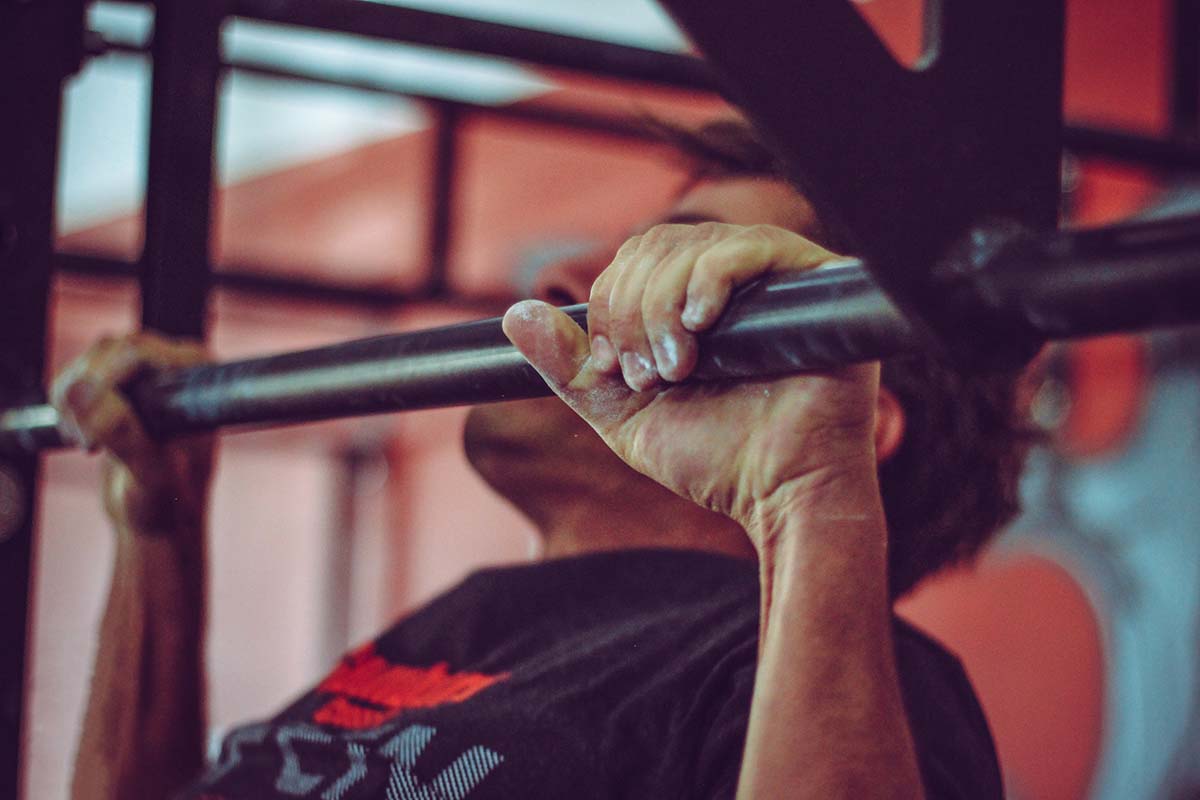
This post is about using resistance bands for pull ups – what are the best kind of bands to use, how to use them and where to get them.
Pull ups are a kind of calisthenics exercise which primarily target your Latissimus Dorsi (the largest muscle in your upper back) and Biceps. But, like most body-weight exercises, they also bring into play many auxiliary muscles, like the Trapezius, Deltoids, forearms, abdominals, etc.
Forcing many large muscle groups to work together in unison mean pull ups are super effective at developing real-world functional strength. For this reason, they’re considered a staple exercise by elite fighting forces around the world.
Table of Contents
ToggleWhy use resistance bands for pull ups?
Pull ups are one of the best back strength exercises you can do, but you may feel put off by their difficulty.
You can use resistance bands for pull ups to gradually prepare yourself for the movement and experience the full benefits of this incredible calisthenics exercise.
What are the best resistance bands for pull ups?
Pull up assist bands are latex loops 208cm in circumference, available in several resistance levels.
These kind of resistance bands are the best for doing pull ups because they’re easy to loop onto the bar and can be used to reduce the weight load of the exercise.
The only pull up bands worth getting are those made of layered latex. This manufacturing process creates bands made from 15 continuous layers of natural latex. The process is slow (takes around 3 weeks), but it’s what gives the bands their toughness and durability.
Atemi Sports pull up resistance bands are all made using this advanced layering process, unlike many others on the market which are manufactured quickly and cheaply in a mould – resulting in breakage and rapid loss of elasticity.
How to use resistance bands for pull ups
Loop the band securely onto the bar and step into the other end of the loop. You can then perform the exercise as normal but with the reduced weight making it much easier.
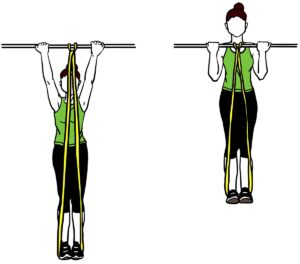
Here’s a video from our YouTube channel showing you how:
Which color pull up band to choose?
This depends entirely on your current level of strength and on your body condition. If you already have experience doing strength exercises and you’re not too overweight, choosing the red band will make the exercise just a bit easier, but still a challenge.
If you’re very overweight and have low arm strength, the blue band will make the movement easy enough for you to get into and start developing the technique.
For the average person who’s just new to doing pull ups, the black band is always a safe bet:

Whichever band you start with, stick with it until the exercise becomes easy, then switch to a lighter band. Eventually you’ll be able to do pull ups unassisted.
Using resistance bands for advanced calisthenics exercises
If you get to the point where pull ups start to become fairly easy, you might want to progress further with these more advanced calisthenics movements:
#1 Muscle Ups
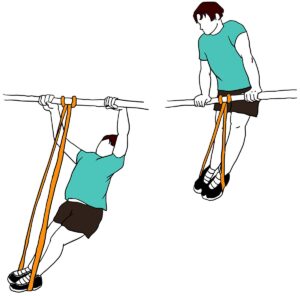
#2 Front Lever
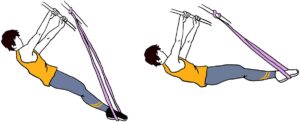
In the same way that you used resistance bands for pull ups, here you can use them to take some of the weight off and gradually get yourself used to the movement.
You can read more about these and other body-weight exercises in our post on calisthenic resistance bands.
To see our full range of resistance bands for pull ups and other strength exercises click here.
Subscribe to our Instagram and YouTube channel for exercise videos like this back workout:

